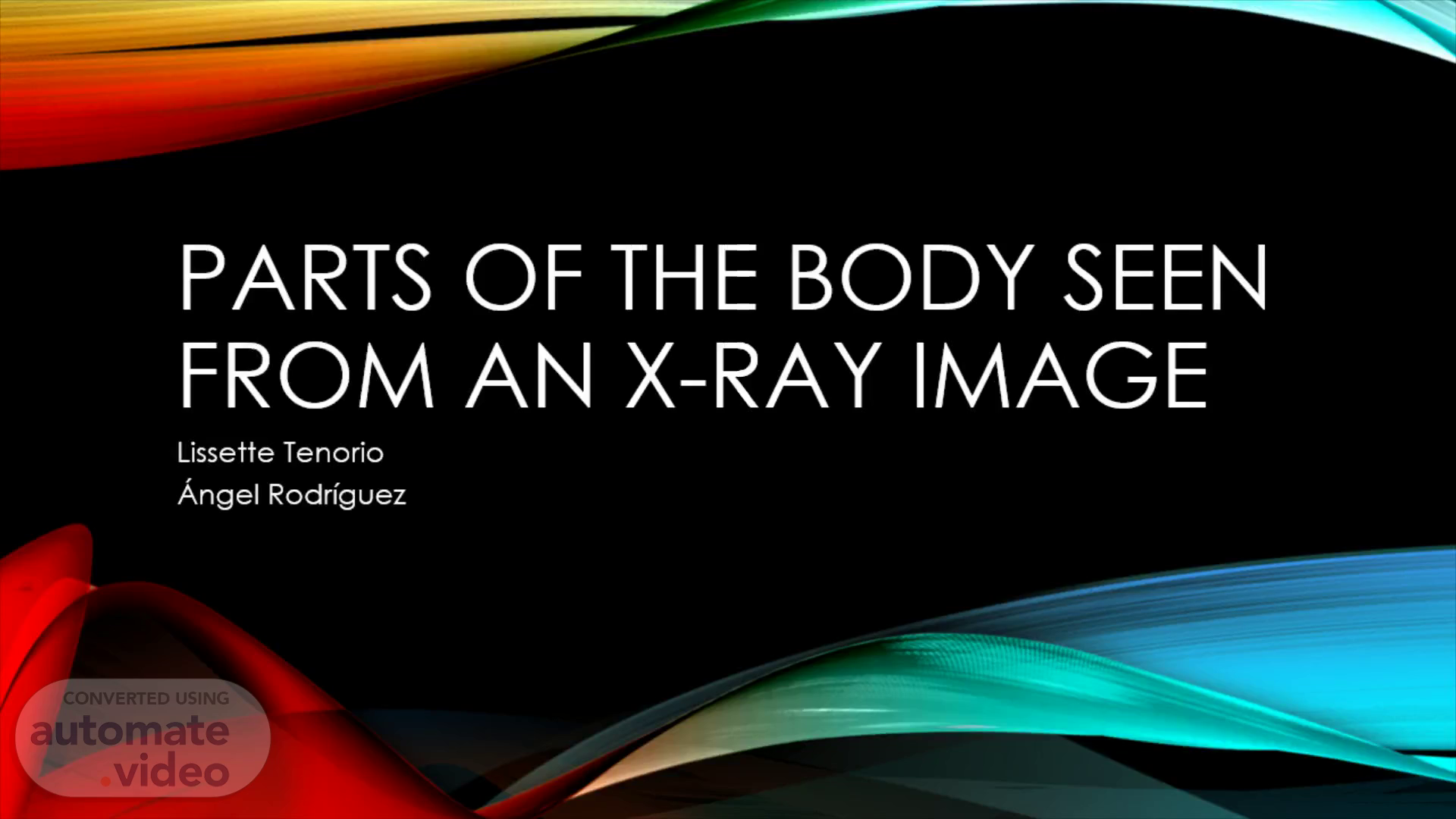
Parts of the body seen from an X-ray image
Scene 1 (0s)
Parts of the body seen from an X-ray image. Lissette Tenorio Ángel Rodríguez.
Scene 2 (8s)
spinous processes. Each vertebra has a bony protrusion that protrudes backwards. These bony protrusions are called “spinous processes.” The muscles and ligaments of the back are attached to these bumps to aid in movement and flexibility of the back..
Scene 3 (23s)
The clavicle. The clavicle is a long, thin bone between the upper chest (sternum) and the shoulder. We have two clavicles, one on each side of the sternum. These help us keep our shoulders aligned..
Scene 4 (38s)
Lungs. The lungs draw oxygen into the blood and remove carbon dioxide in a process called gas exchange..
Scene 5 (49s)
the heart. The heart pumps blood to all parts of the body. The blood supplies oxygen and nutrients to the entire body and removes carbon dioxide and waste elements. As blood travels through the body, oxygen is used up and the blood becomes deoxygenated..
Scene 6 (1m 5s)
The ribs. The ribs are the skeletal protection of the lungs and chest cavity. The ribs and their muscles expand and contract with normal breathing..
Scene 7 (1m 20s)
spinal column. The vertebral column provides structural support to the trunk and surrounds and protects the spinal cord. The spinal column also provides attachment points for the muscles of the back and for the ribs..
Scene 8 (1m 39s)
the diaphragm. The diaphragm, which is located below the lungs, is the main muscle of respiration. It is a long, dome-shaped muscle that contracts rhythmically and continuously, most of the time involuntarily..
Scene 9 (1m 54s)
Trachea. The main function of the trachea is to transport air to and from the lungs during respiration. Also, protect the respiratory tract by warming and humidifying the air, and driving foreign particles towards the pharynx for their expulsion..
Scene 10 (2m 10s)
the phalanges. They allow the realization of the movements of flexion, extension and opposition of the thumb. Finally we know that thanks to the phalanges of the hands we can perform the different grips, to perform the basic activities of daily life..
Scene 11 (2m 28s)
The carpal bones. The carpal bones fulfill the function of allowing the union of the arm and the hand, together with various muscles, ligaments and tendons..
Scene 12 (2m 41s)
lower jaw. The largest and strongest bone in the face. It forms the lower part of the jaw and a portion of the mouth, as well as the lower teeth. The lower jaw is the only bone of the head that moves, it fixes the muscles of chewing and other movements of the mouth..